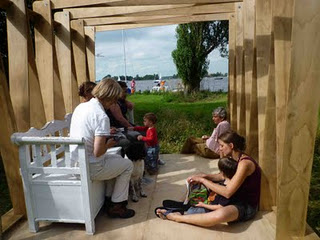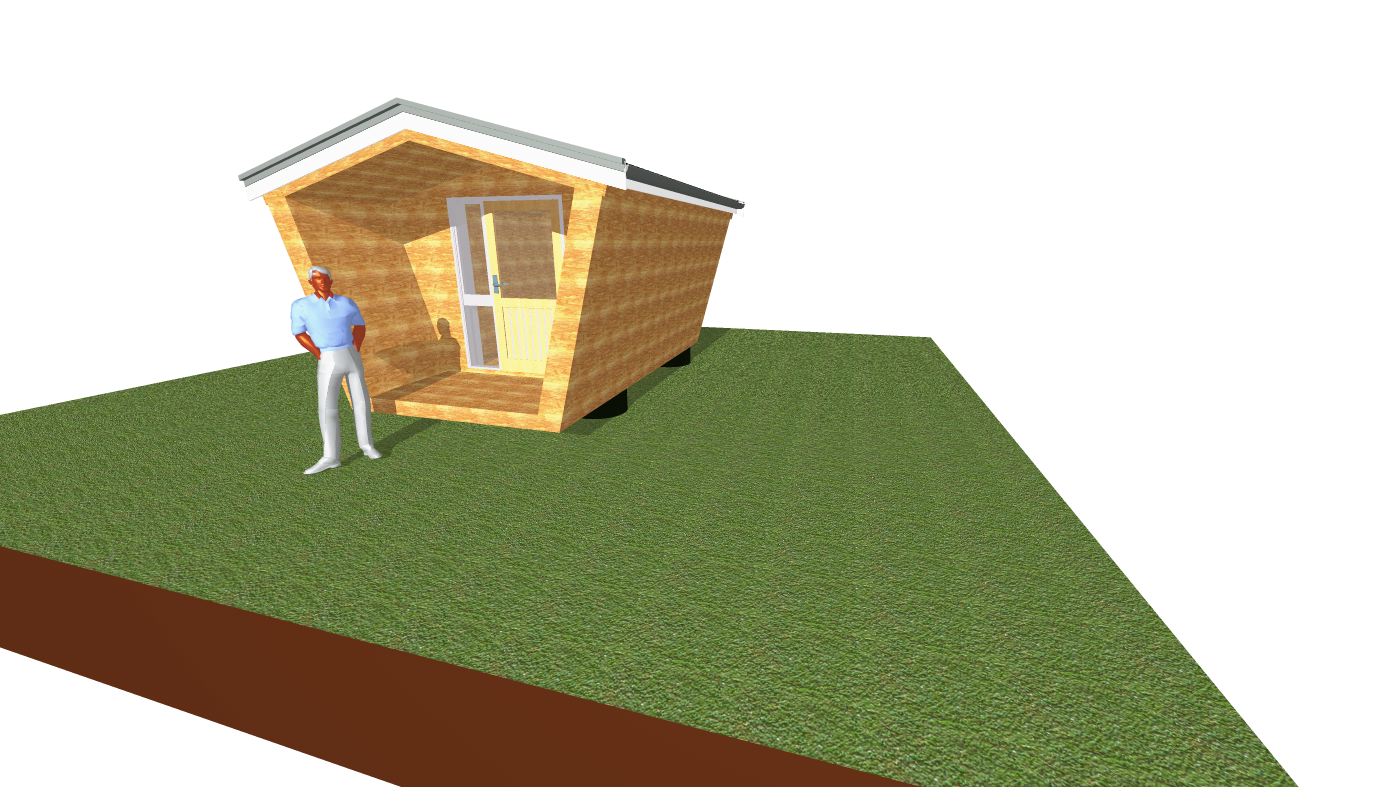BedZed Development:




Freiberg Housing



Medium Density Housing, Christchurch:

Frankton Proposal:

Existing Housing in New Zealand:


What We Can Do (Roger Buck)

Bricks Work – After 22 Feb Earthquake:

Urban Growth – Two Examples of Another Way
[Article Submitted to the Christchurch Press on Urban Form]
Although the evidence is all around us there seems to be little appreciation of the depth of the impacts that the car-industry giants, allied to the oil industry, have had on our lives. They have in a very short time destroyed our sense of community – the human-to-human interactions that are the foundation of human existence – and greatly increased our cost of living (which represents a massive transfer of wealth from us to them) in order to meet their own self-centred, commercially-driven objectives.
To achieve this General Motors and Ford (in particular) took over the design of our cities. And as first steps in that direction public transport systems were destroyed, or, at best, marginalised, and road-based urban sprawl took over as the primary means of dealing with urban growth. Motorways became symbols of economic ‘progress’. Taken together all these things were, and still are, regarded as fundamental to our being a so-called ‘advanced’ society.
With increasing concerns about urban sprawl becomin
g evident, peak oil now upon us, and climate change rarely out of the news, it is imperative that we take a serious look at alternatives.
Two examples of developments which, in their entirely different ways, were designed to put people before cars are Port Grimaud, on the south coast of France (near Saint-Tropez); and New Ash Green, on the outskirts of London.

Significantly, in each case their architects were also the developers and they run roughly in parallel in terms of conception and initial work (1960s), but New Ash Green took less time to complete. Both projects experienced problems with the planning authorities which took several years to deal with – New Ash Green required ministerial intervention to obtain approval.
Port Grimaud covers 90ha, and includes 2,900 homes (a population of perhaps 8,000 people), a variety of retail outlets, 7km of canals, and 14km of waterfront. The architect and developer was M. Francois Spoerry, and his aim was to build a waterside village designed to relate closely in appearance to the traditional characteristics of the local architecture and urban form, which had evolved over thousands of years. This was applied in particular to the visible elements of group composition, scale, materials and finishes – but also to the movement of people within the development. Consequently vehicles were to be kept out, except for servicing purposes, with parking generally being distributed around the perimeter.
It is without doubt a very beautiful and appealing place. There are plazas, courtyards and a market place; gardens, streets, lanes, waterfront walks, and bridges form linkages which connect everything together. Cafes, bars, restaurants and shops are plentiful and varied. The scale of everything is entirely human, and although variety and individuality abounds there is a powerful sense of coherence, physically and socially. It was clearly designed from the heart, and is therefore as far from our obsession, in New Zealand, with simplistically conceived, rigid, box-ticking, traffic-focused rules (and the associated lawyer-driven processes), which produce our urban environments as it is possible to imagine.
Unfortunately this development has become a victim of its own success, and its location. Many of the owners come from northern Europe, which means that it is a summer destination for many, and it also attracts large numbers of tourists – also during the summer – which skews social and economic activity. As well, because of the emphasis on boats, there is also a demographic bias.


New Ash Green is entirely different in that it was conceived as a relatively self-contained village of low-cost housing for around 5,000 people, set in countryside some 35km from central London. It was intended to show that there could be alternatives to the generally bleak housing estates being built elsewhere, and although most houses were to be privately owned it was planned to include about 400 ‘social’ houses – until a change of government pulled the plug on this (thus bankrupting the developer). Whilst the surroundings – high on the North Downs – are certainly very pleasant the only close attraction of any significance is Brands Hatch, a race track.
The architect and developer (via Span), Eric Lyons, as with Francois Spoerry, worked from people first, cars second. This led to groups of houses being located next to landscaped walkway links to the village centre, school, and recreation areas. Cars are generally parked or garaged close to, but away from the dwellings, and are concealed partly or completely by what is now very substantial planting. The village centre and school are within easy, safe, and pleasant walking distance from all the houses. The amount of green space is amazing – it’s perfect for children.
Where this development stands out is that it shows the value of comprehensive design and development. As with Port Grimau the entire project was carried out entirely as a singular, unified, environmentally-centred design process with a wide mix of housing types. By contrast, in New Zealand, the design inputs are limited to subdivision, roads, and services – which come first, and which are all controlled by the town planning process – then, tacked-on, notional, landscaping. There is no architecture as such – the most visible residual outcome of this process, the roads and houses, are in effect also designed by planners because of their control of heights, separation from boundaries and set-backs from streets.
Forty years on and New Ash Green has matured, and looks great. But there are a few glitches. Two motorways built nearby have led to reduced use of the shopping centre and it has clearly suffered. Making this worse, the absentee centre owners have paid no attention to maintenance, and this shows; as well, changes have been made which have damaged the original architecture.
There is a railway nearby, but beyond easy walking distance, and there is a bus service. But neither of these can compete with use of personal vehicles so until something changes, such as the cost of motoring, the commercial viability of the shopping centre will remain marginal.
A second problem, a relatively new one, has been the growth of absentee house owners: the so-called buy-to-let investors have moved in. They also neglect maintenance, and have no interest in what their tenants get up to either.
Both New Ash Green and Port Grimau are managed by residents’ committees, and owners are charged an annual fee to cover the costs of this. There are also controls over such things as colours, alterations and additions. Some residents may resent this, but the results are clear: both developments are, albeit in quite different ways, exceptionally attractive, very well maintained, and liveable environments.
Both these developments clearly share a common design ethic. They demonstrate the value of visionary inputs into high quality, comprehensive, and carefully coordinated design processes which recognise our need for human interactions both with each other and with the wider natural environment, as well as our responses to scale, proportion, texture, colour and form.
Contrast this approach to the housing which results from our fractured, leaderless system which reduces design inputs to the absolute legal minimum and we get exactly what we see all around us: visual tedium, sterility, and endlessly cloned oversized roads lined with equally monotonous one type-fits-all houses – each with a wide driveway an
d a double garage. Recognition of having appealing spaces around us, and of social diversity, or having a pleasant walk to the shops, schools and other amenities? – forget it: like it or not there is no choice but to jump into your car and drive across town to do these things, and in so doing you will pass through equally soulless surroundings, and end up at a big box retail outfit set in the middle of a gigantic car park and almost never meet anyone you know.
I think there is very clear message behind all this: we can and must do better.
PDF: Clifton After T28-C-brochure-( New Zealand, Roger Buck)
Roger Buck can be reached at bucrl@clear.net.nz



































